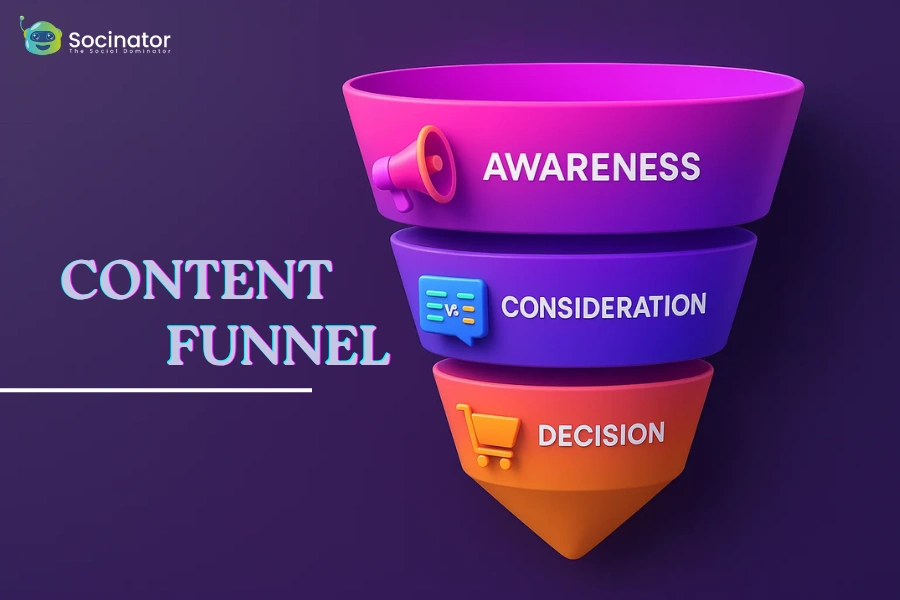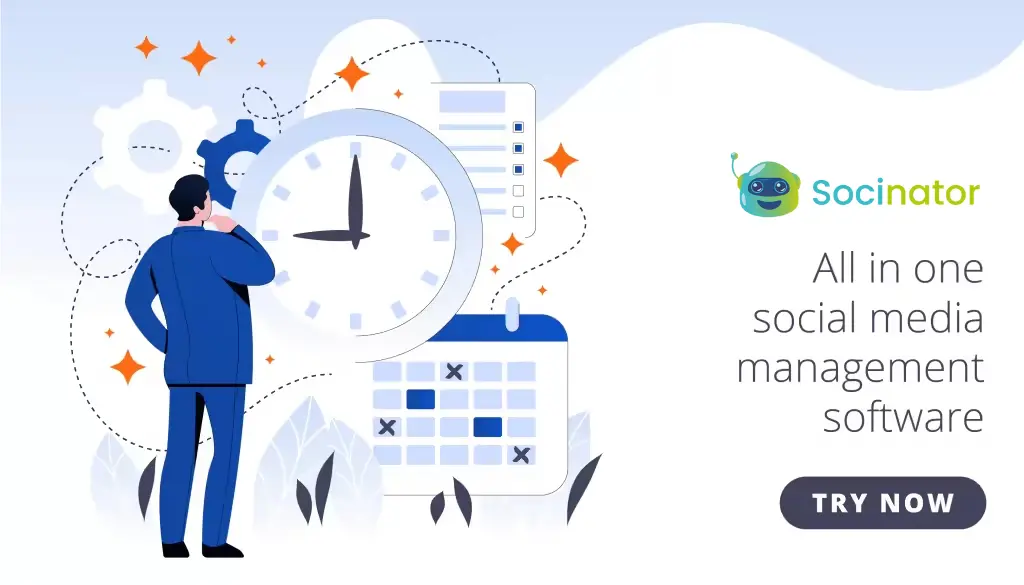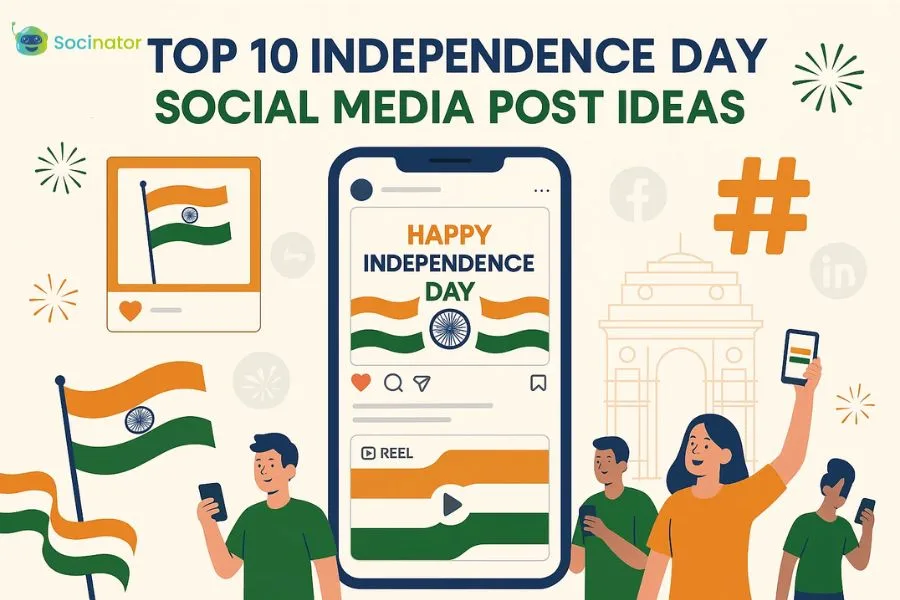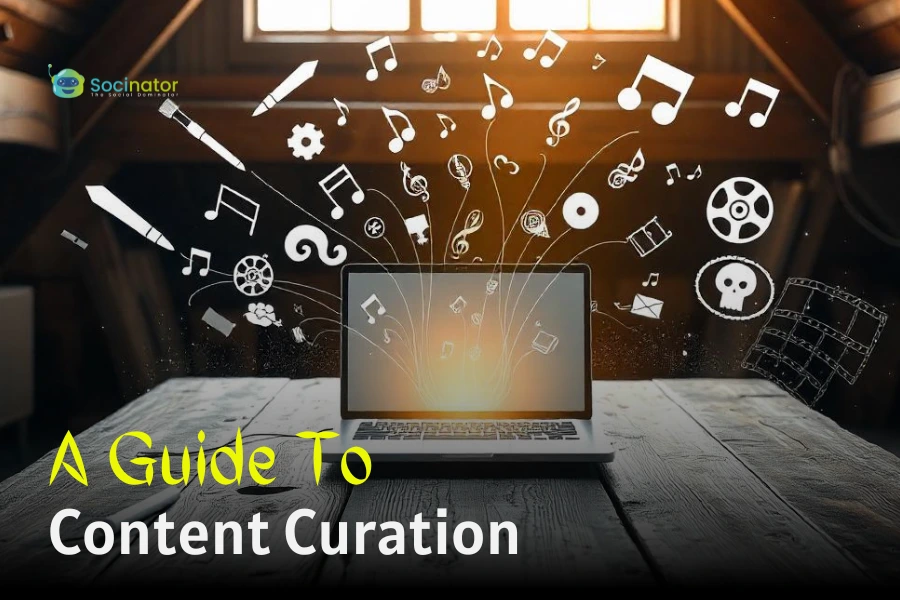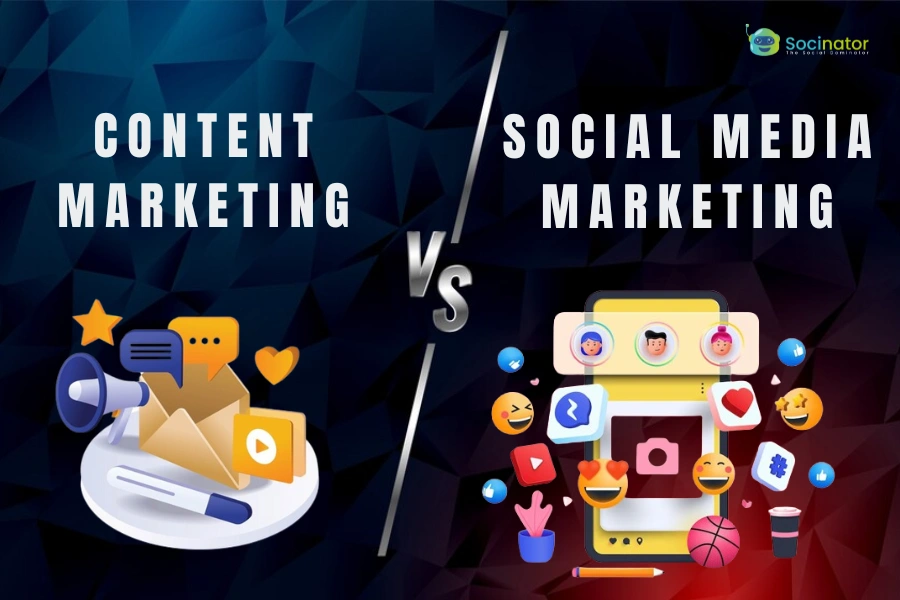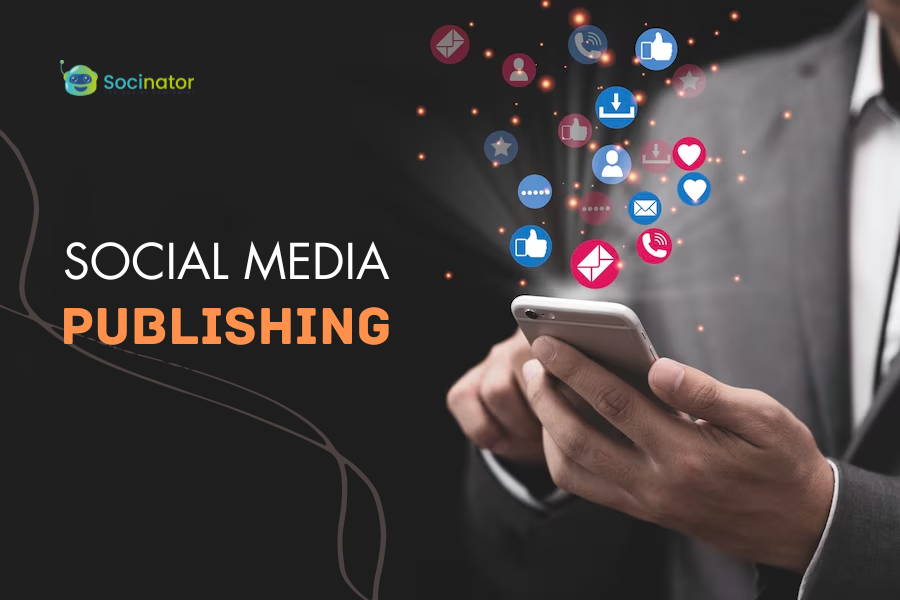Business growth depends on more than just creating content. It requires guiding prospects through a structured journey that builds awareness, trust, and action. A content funnel provides the framework for this process, helping brands turn casual visitors into paying customers. Whether you run a small business or manage a large enterprise, understanding how to create and optimize a content funnel is key to long-term success.
This blog explores how a content funnel works, why it matters, and how you can integrate social platforms, automation, and tools like Socinator to boost results.
Listen To The Podcast Now!
Understanding The Content Marketing Funnel
The content funnel is a strategic model that illustrates how audiences move from awareness to decision-making. At the top, prospects discover your brand through blogs, videos, or social posts. In the middle, they interact with case studies, email sequences, or product demos. At the bottom, they convert through tailored offers or consultations.
Every stage requires the right type of content to move prospects forward. For instance:
Awareness
At this stage, potential customers are just discovering your brand for the first time. They’re usually looking for solutions to a problem, not a product directly. Content like blogs, guides, infographics, or videos helps attract attention and build trust. The goal is to educate and create awareness so they recognize your business as a reliable source.
Consideration
Here, the audience already knows your brand and is weighing their options. They seek deeper insights, such as webinars, case studies, comparisons, or testimonials that highlight your value. This stage is about positioning your brand as the stronger choice among competitors. The right content should address their concerns and answer questions that influence decision-making within the content funnel.
Decision
At this point, the audience is ready to make a purchase but needs one last push. Free trials, product demos, consultations, or limited-time offers work best to remove hesitation. The goal is to provide assurance and make it easy for them to take the final step. Strong calls-to-action and personalized offers help seal the deal and convert prospects into customers.
When businesses design content that aligns with these stages, the content funnel ensures a smoother buyer journey and increases the chance of conversion.
Why A Content Funnel Is Critical For Business Growth?
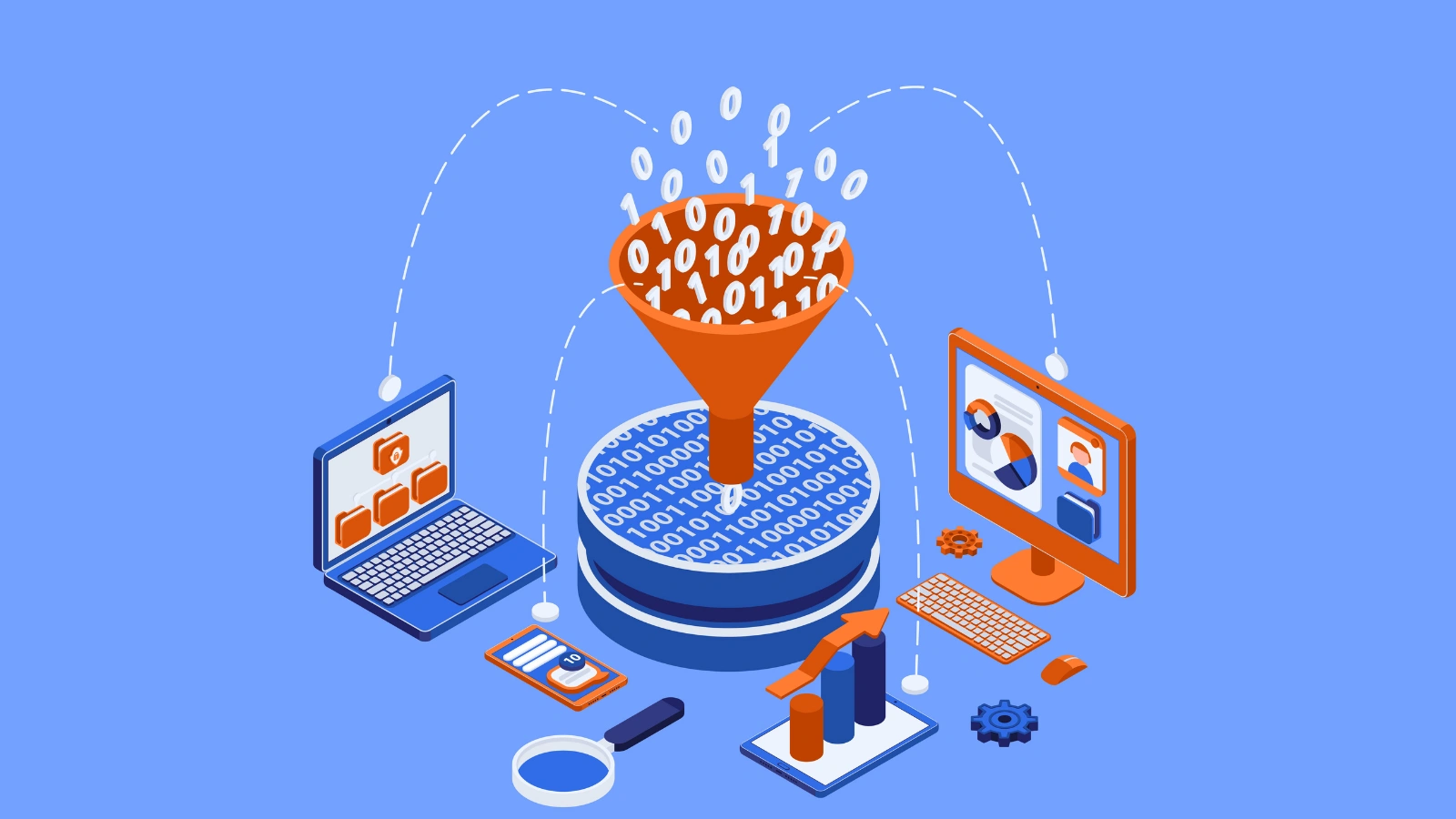 A content funnel works like a roadmap. Without it, businesses risk losing leads who don’t know what step to take next. Here’s why it’s essential:
A content funnel works like a roadmap. Without it, businesses risk losing leads who don’t know what step to take next. Here’s why it’s essential:
Improves Lead Nurturing
A content funnel ensures that prospects receive the right information at the right time. By offering tailored resources at each stage, businesses can guide leads naturally toward a decision. This personalized approach makes customers feel understood and valued. In turn, it increases engagement and keeps leads moving forward.
Strengthens Trust
Trust is built when a brand consistently delivers helpful, relevant content. A funnel provides structure, ensuring messaging aligns with the customer’s needs at every step. Over time, this consistency positions the business as a reliable authority in its niche. The stronger the trust, the higher the chances of long-term relationships.
Boosts Conversions
A clear funnel minimizes confusion by showing prospects exactly what to do next. Each stage reduces barriers, whether through testimonials, trials, or offers that simplify the buying decision. By addressing doubts early, businesses make conversion smoother. This structured process often leads to higher sales and repeat customers.
Supports Scalability
Once a funnel is established, it becomes easier to optimize and replicate. Businesses can test, measure, and refine content to reach larger audiences without reinventing the wheel. A scalable funnel means sustainable growth as new leads enter and convert. This repeatable system creates long-term business stability.
When executed correctly, a content funnel aligns marketing with sales, resulting in measurable growth.
A well-designed content funnel builds the foundation for predictable growth but in today’s time, traditional funnels alone are no longer enough. Audiences don’t just consume content on websites or email they live and engage on social platforms daily. That’s where the true power of growth lies.
Social Media Funnel: The Missing Piece In Your Content Marketing
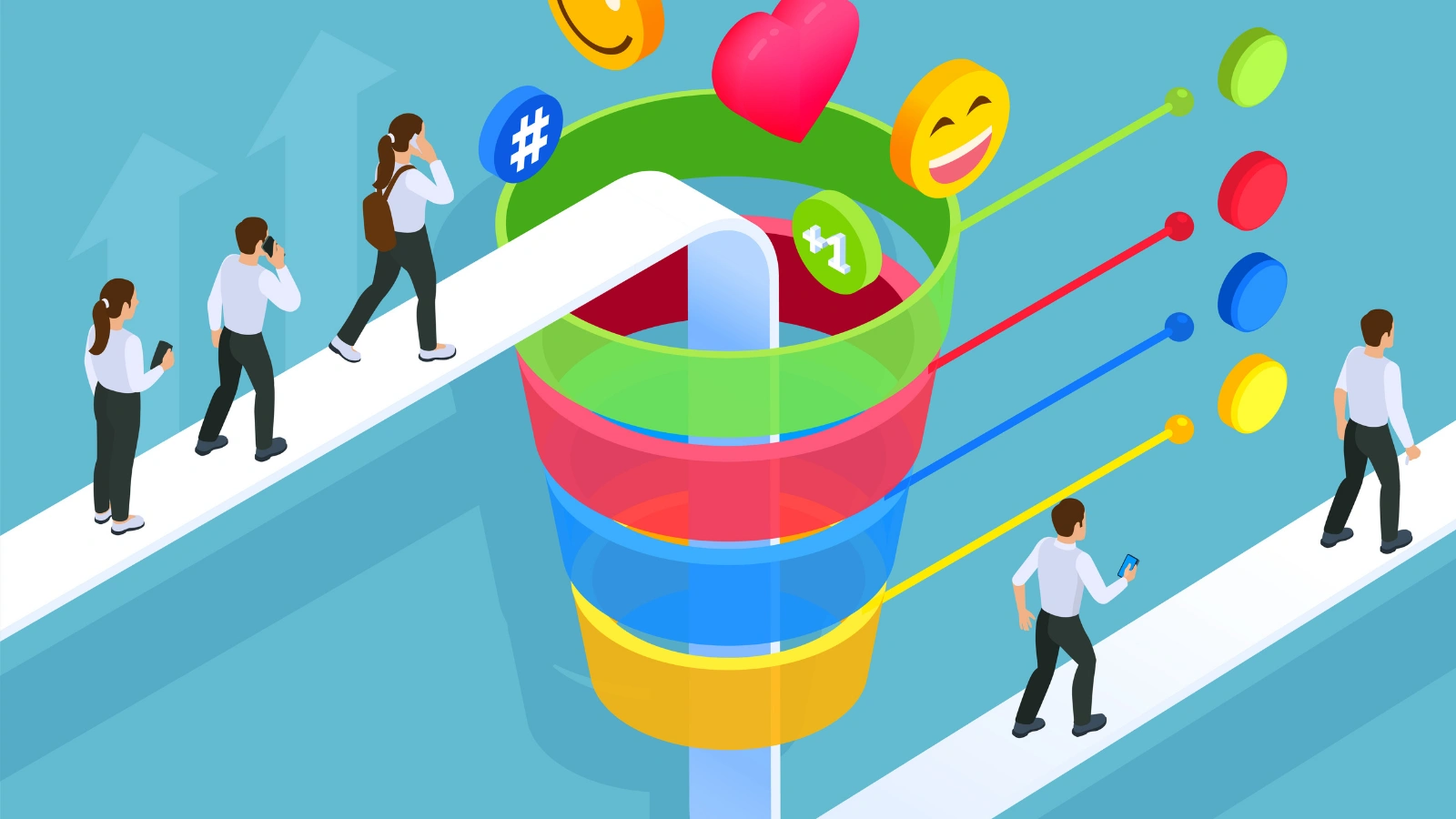 While websites and email campaigns form the backbone of most funnels, social platforms now play a central role in guiding prospects from awareness to action. A social media funnel is not just an extension, it’s the dynamic layer your content strategy needs to meet buyers where they already are: on Instagram, Facebook, LinkedIn, TikTok, and more.
While websites and email campaigns form the backbone of most funnels, social platforms now play a central role in guiding prospects from awareness to action. A social media funnel is not just an extension, it’s the dynamic layer your content strategy needs to meet buyers where they already are: on Instagram, Facebook, LinkedIn, TikTok, and more.
Unlike static channels, social media allows real-time engagement, interactive communication, and immediate conversion paths all within a single platform. Here’s how it enhances every stage of the funnel:
1 Awareness
Social platforms are powerful for introducing your brand to new audiences. Viral posts, trending reels, and shareable content capture attention instantly. With billions of active users, platforms like Instagram, Facebook, and TikTok expand your reach far beyond what a traditional blog or email campaign can achieve. At this stage, the goal is visibility—spark curiosity and make your brand unforgettable.
2 Consideration
Once people recognize your brand, social media helps keep them engaged and nurtured. Interactive posts, user reviews, live sessions, polls, and behind-the-scenes stories showcase authenticity and build trust. This level of engagement isn’t just about exposure it creates a community around your brand. The more connected your audience feels, the more likely they are to move closer to making a purchasing decision.
3 Decision
Social media eliminates friction at the point of purchase. With features like shoppable posts, “buy now” buttons, and time-sensitive offers, prospects can transition from browsing to buying instantly without leaving the app. This seamless journey accelerates conversions, increases ROI, and keeps your business ahead of competitors still relying on outdated methods.
Without a social media funnel, brands leave massive opportunity on the table missing real-time engagement, social proof, and direct conversion paths that competitors are already using to win.
Read More!
Why 90% Of Marketing Funnel Fail (And How To Fix Yours)
Top 7 Content Planning Tools For Successful Marketing In 2024
Social Media Sales Funnel: Turning Followers Into Customers
The social media sales funnel focuses on converting online followers into paying customers. Followers who enjoy your content won’t automatically buy. They need structured guidance.
A strong social media sales funnel includes:
Engagement-Driven Posts
Social media success starts with building authentic connections. Posts that invite likes, comments, and shares create meaningful interactions and strengthen community ties. This engagement keeps your brand active in followers’ feeds and nurtures long-term relationships. Over time, it transforms passive viewers into loyal prospects.
Exclusive Offers
To move followers closer to purchase, exclusivity works as a strong motivator. Discounts, early access, or gated resources make your audience feel valued and special. These offers create urgency while rewarding engagement. As a result, followers are more likely to take the next step toward becoming paying customers.
Remarketing Ads
Not all prospects buy on their first interaction, which is why remarketing is key. Retargeted ads remind audiences of products they viewed or content they engaged with. This consistent exposure keeps your brand top-of-mind and reduces the chance of losing leads to competitors. Effective remarketing bridges the gap between interest and conversion.
When done right, this funnel shifts attention from vanity metrics like follower counts to tangible business outcomes like revenue growth.
Social Media Funnel Examples To Inspire Your Strategy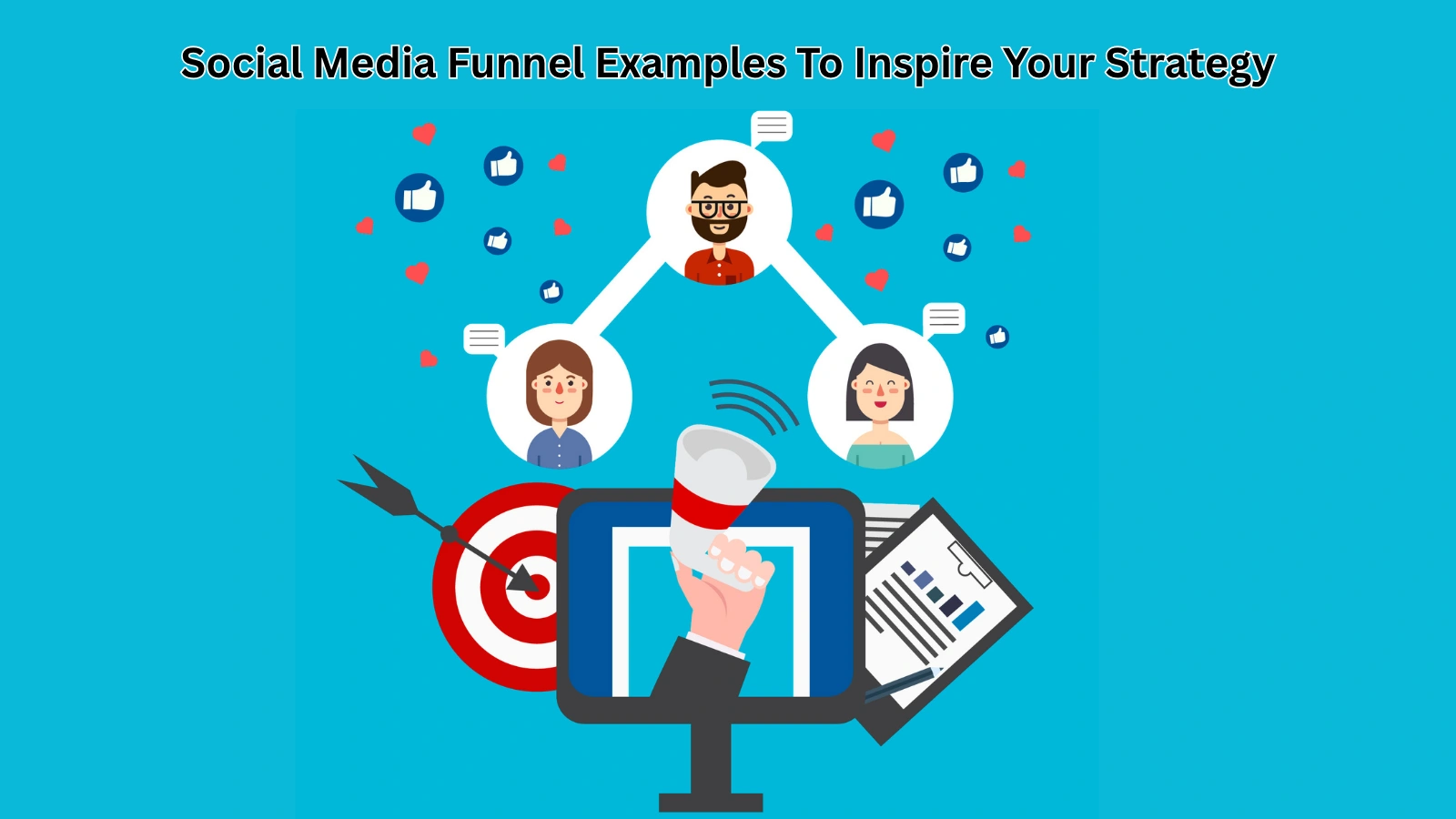
Looking at real social media funnel examples can spark fresh ideas. Consider these approaches:
Instagram Funnel
Instagram is ideal for capturing attention with short, engaging reels that spark curiosity. Once followers are hooked, stories provide a space for interactive polls, Q&As, or behind-the-scenes content. This deeper engagement builds stronger connections and trust. Finally, direct links in bios or product tags guide users seamlessly to your sales pages.
Facebook Funnel
On Facebook, engaging posts such as memes, tips, or videos draw users into your brand’s orbit. From there, private groups or live sessions create a nurturing space where prospects can interact more personally. This helps establish credibility and foster community. Retargeted ads then close the loop by turning interest into measurable conversions.
LinkedIn Funnel
LinkedIn is perfect for building authority through thought-leadership posts and industry insights. As prospects engage, sharing case studies or client success stories reinforces your value and expertise. Offering a free consultation or demo makes it easy for interested leads to take the next step. This funnel works especially well for B2B growth.
Each of these social media funnel examples shows how platforms can drive leads when used strategically.
Common Mistakes Businesses Make With Funnels
Even the best-intentioned strategies can fail if businesses overlook the basics. Here are frequent mistakes with a content funnel:
Skipping Stages
One of the biggest funnel mistakes is rushing straight to the sale. Without first building awareness and trust, prospects often feel pressured and disengage. A structured funnel ensures audiences progress naturally from curiosity to confidence. Skipping steps shortens the journey but weakens long-term results.
Overcomplicating the Journey
While a funnel needs structure, too many layers can overwhelm potential customers. Long forms, excessive steps, or unclear directions create friction that causes drop-offs. Simplicity makes the path to purchase more inviting and effective. A clean, streamlined funnel keeps prospects engaged from start to finish.
Ignoring Analytics
Funnels thrive on data, and neglecting analytics means missing valuable insights. Metrics like click-through rates, engagement, and conversions reveal what works and what doesn’t. Without tracking, businesses may keep repeating ineffective tactics. Regular analysis allows continuous improvement and higher returns.
Neglecting Social Media
Today’s buyers spend much of their time on social platforms, yet many funnels ignore this channel. Excluding social media limits reach and disconnects businesses from real-time engagement opportunities. Platforms like Instagram, Facebook, and LinkedIn add flexibility to every funnel stage. Incorporating them ensures stronger visibility and conversions.
Avoiding these mistakes ensures smoother execution and stronger results.
Use Socinator To Scale Your Social Media Funnel
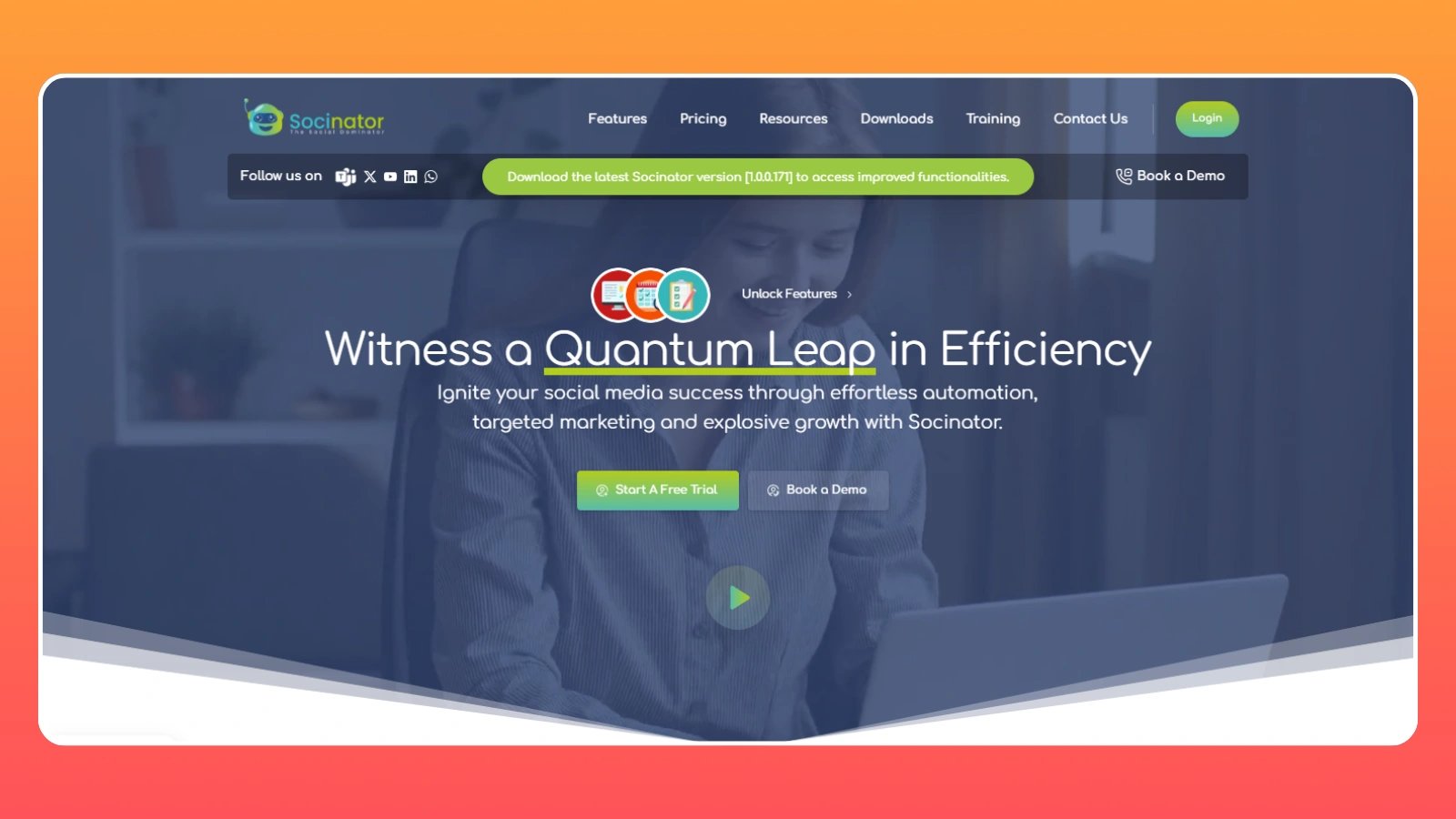 Building a successful content funnel means guiding your audience from awareness to conversion, and today, much of that journey happens on social media. But managing multiple platforms manually can drain time, reduce consistency, and leave gaps in your funnel. That’s where Socinator comes in as an all-in-one automation and management solution designed to keep your funnel active, optimized, and scalable across every major network.
Building a successful content funnel means guiding your audience from awareness to conversion, and today, much of that journey happens on social media. But managing multiple platforms manually can drain time, reduce consistency, and leave gaps in your funnel. That’s where Socinator comes in as an all-in-one automation and management solution designed to keep your funnel active, optimized, and scalable across every major network.
Core Features That Power Your Content Funnel
1. Social Media Scheduling
Consistency is critical for funnel success. With Socinator’s scheduling feature, you can plan and publish posts across Instagram, Facebook, Twitter, LinkedIn, and more—all from one dashboard. This ensures your content hits the right audience at the right stage without missing opportunities.
2. Content Management
From blog promotions to product updates, content needs to be organized across funnel stages. Socinator’s centralized content management tools make it easy to create, edit, and distribute posts that fit into awareness, consideration, and decision stages. This alignment keeps the funnel smooth and effective.
3. Audience Targeting
A funnel only works when you’re reaching the right people. Socinator’s targeting features let you segment audiences by interests, demographics, and behavior. Whether you’re running awareness campaigns on Instagram or retargeting on Facebook, precise targeting boosts funnel performance.
4. Analytics and Insights
Without analytics, funnels stall. Socinator provides detailed performance metrics across platforms, helping you see which content drives engagement, leads, or sales. These insights allow you to adjust strategies, optimize weak points, and maximize conversions.
5. Automation Tools
From auto-likes and comments to direct messages and follow/unfollow actions, Socinator automates the repetitive tasks that eat into your day. Automation keeps your funnel active even when you’re offline, ensuring your brand stays visible at every stage.
6. Account Security
Scaling a funnel requires multiple accounts and actions, but security can’t be ignored. Socinator protects your accounts with safe automation limits, activity controls, and built-in security measures. That means you can grow faster without risking bans or downtime.
Why Socinator
Socinator is not just another social media tool, it’s a complete ecosystem built to automate, manage, and scale your content funnel with precision. Whether you’re a small business, marketing agency, or enterprise brand, Socinator gives you the competitive edge to dominate every stage of the customer journey.
One Platform Unlimited Possibilities.
Socinator provides access to 9+ major social platforms Instagram, Facebook, LinkedIn, Twitter, Pinterest, YouTube, Quora, Tumblr, and Reddit all in one place. Instead of juggling multiple tools, you can plan, publish, engage, and analyze from a single centralized dashboard.
Best Practices For Creating A High-Converting Content Funnel
To make your content funnel effective, follow these best practices:
Define Goals Clearly
A successful funnel begins with clarity about what you want to achieve. Whether your focus is awareness, engagement, or conversion, each goal requires a unique approach. Clear objectives help guide content creation and platform choices. Without defined goals, funnels often lack direction and impact.
Segment Your Audience
Not every customer shares the same needs or preferences, so segmentation is essential. Breaking your audience into groups based on behavior, demographics, or interests allows for tailored messaging. Personalized content resonates more and drives better results. This approach increases engagement while reducing wasted efforts.
Map Content to Stages
Each funnel stage requires different content to keep prospects moving forward. For awareness, use blogs or infographics; for consideration, share webinars or case studies; for decision, provide trials or offers. Mapping ensures that prospects receive the right message at the right time. This alignment reduces friction and boosts conversions.
Leverage Automation
Manually managing multiple channels is time-consuming and inconsistent. Automation tools like Socinator handle repetitive tasks such as publishing, engaging, and tracking. This frees up time for strategy while maintaining an active online presence. Consistency through automation ensures the funnel keeps running smoothly.
Test and Optimize
A funnel is never “set and forget”; continuous improvement is key. Regularly review analytics to see what content drives engagement or conversions. Testing new approaches helps identify what resonates best with your audience. Optimization ensures the funnel stays effective as customer behaviors evolve.
Future Of Content Funnels In A Social-First World
The future of funnels is social-driven. Businesses that align their content funnel with social platforms will outperform those that treat social media as an afterthought. Expect greater integration of AI, automation, and real-time personalization across every stage.
As customer attention spans shrink, creating a streamlined content funnel with fewer steps and higher value content will become the standard.
Conclusion
A content funnel is more than a marketing tactic; it’s a growth engine. By combining structured funnel design, social media integration, and automation tools like Socinator, businesses can turn audiences into loyal customers. The key lies in aligning content with buyer intent, avoiding common mistakes, and continuously refining strategies for better results.
FAQs
Q1. What is a content funnel?
A structured path that guides prospects from awareness to conversion through targeted content.
Q2. How does a content marketing funnel differ from a sales funnel?
The content marketing funnel focuses on delivering valuable content at each stage, while the sales funnel emphasizes closing deals.
Q3. Why use a social media funnel?
A social media funnel helps engage audiences where they already spend time, driving leads directly into your pipeline.

